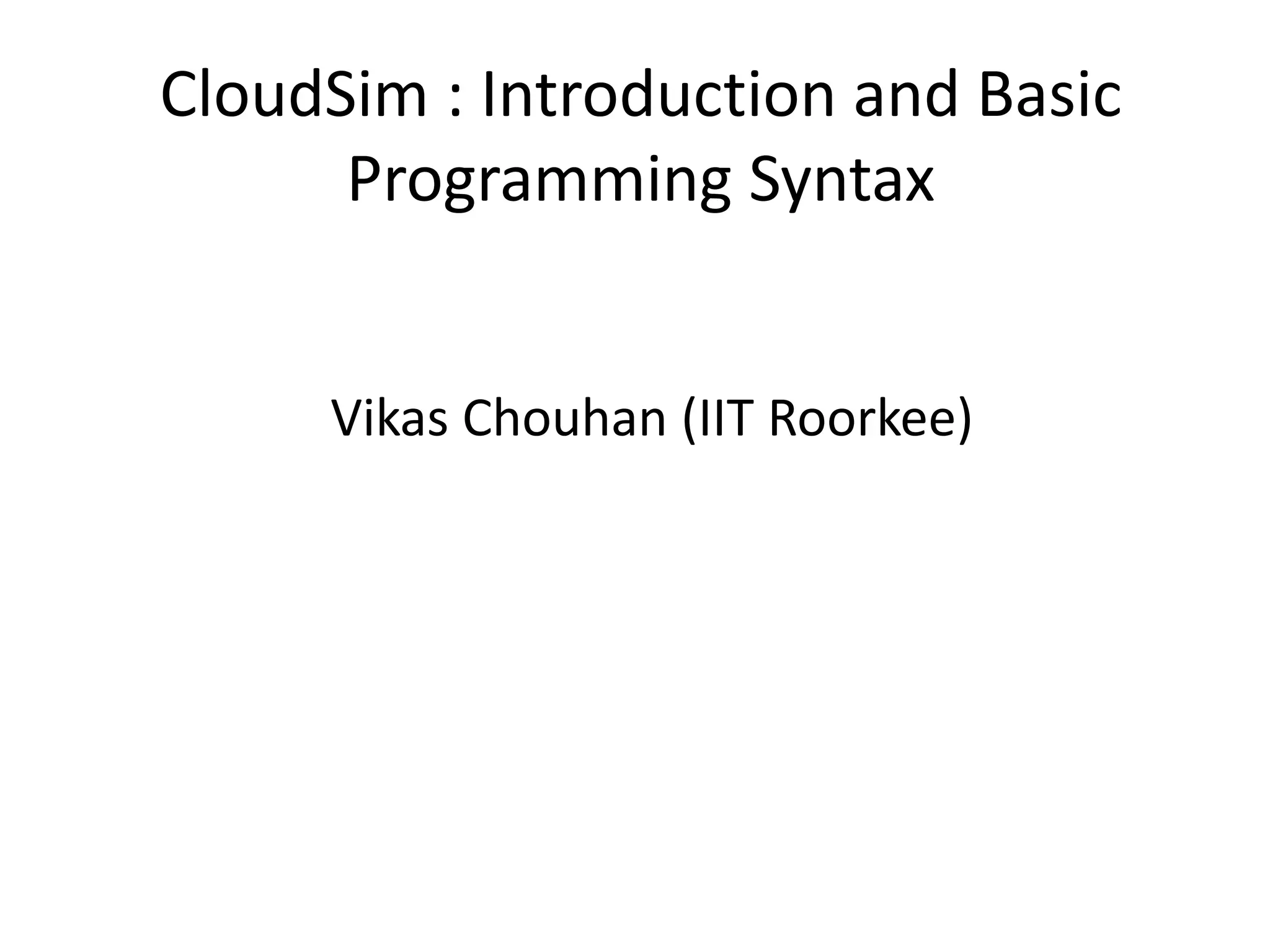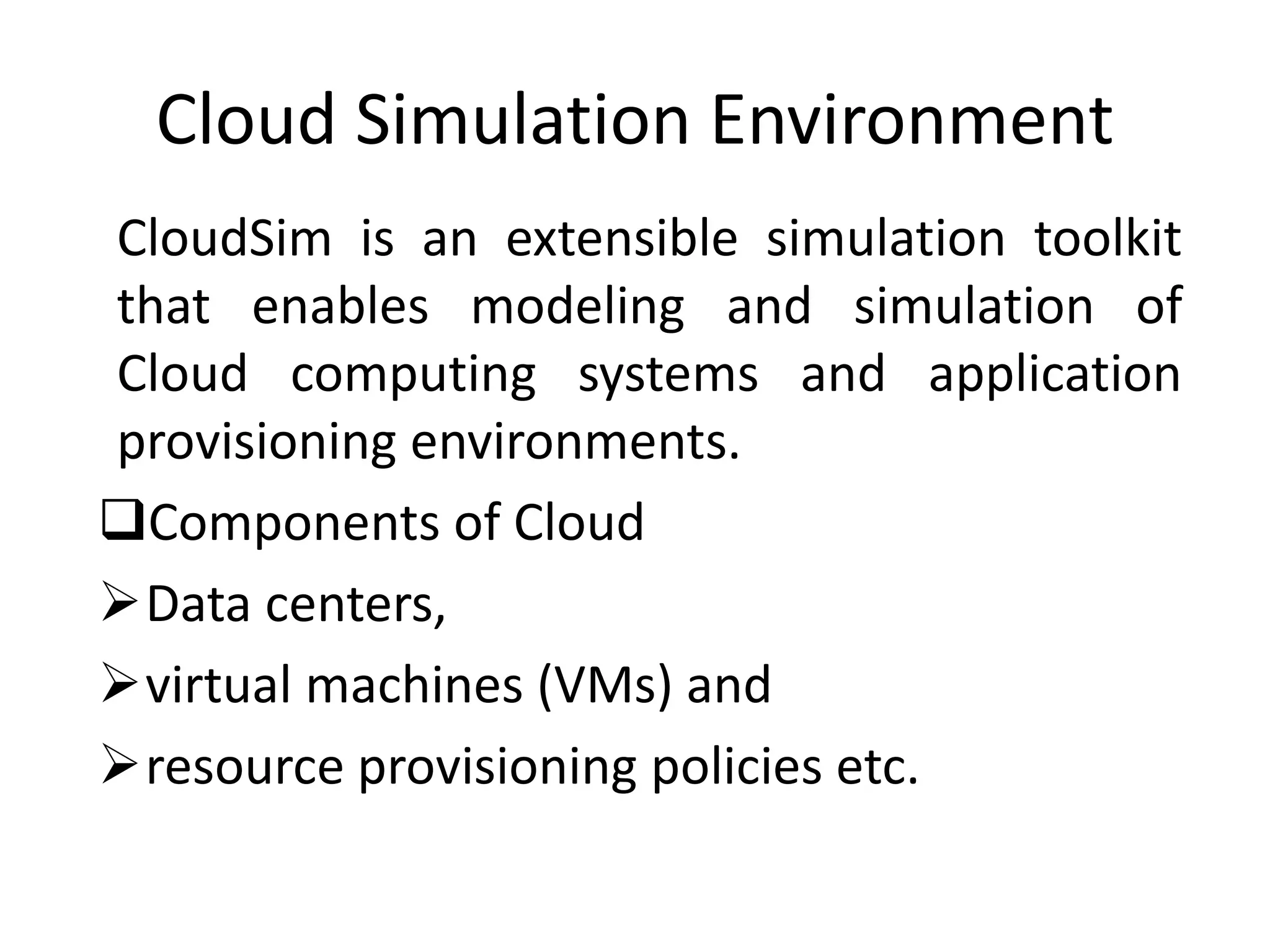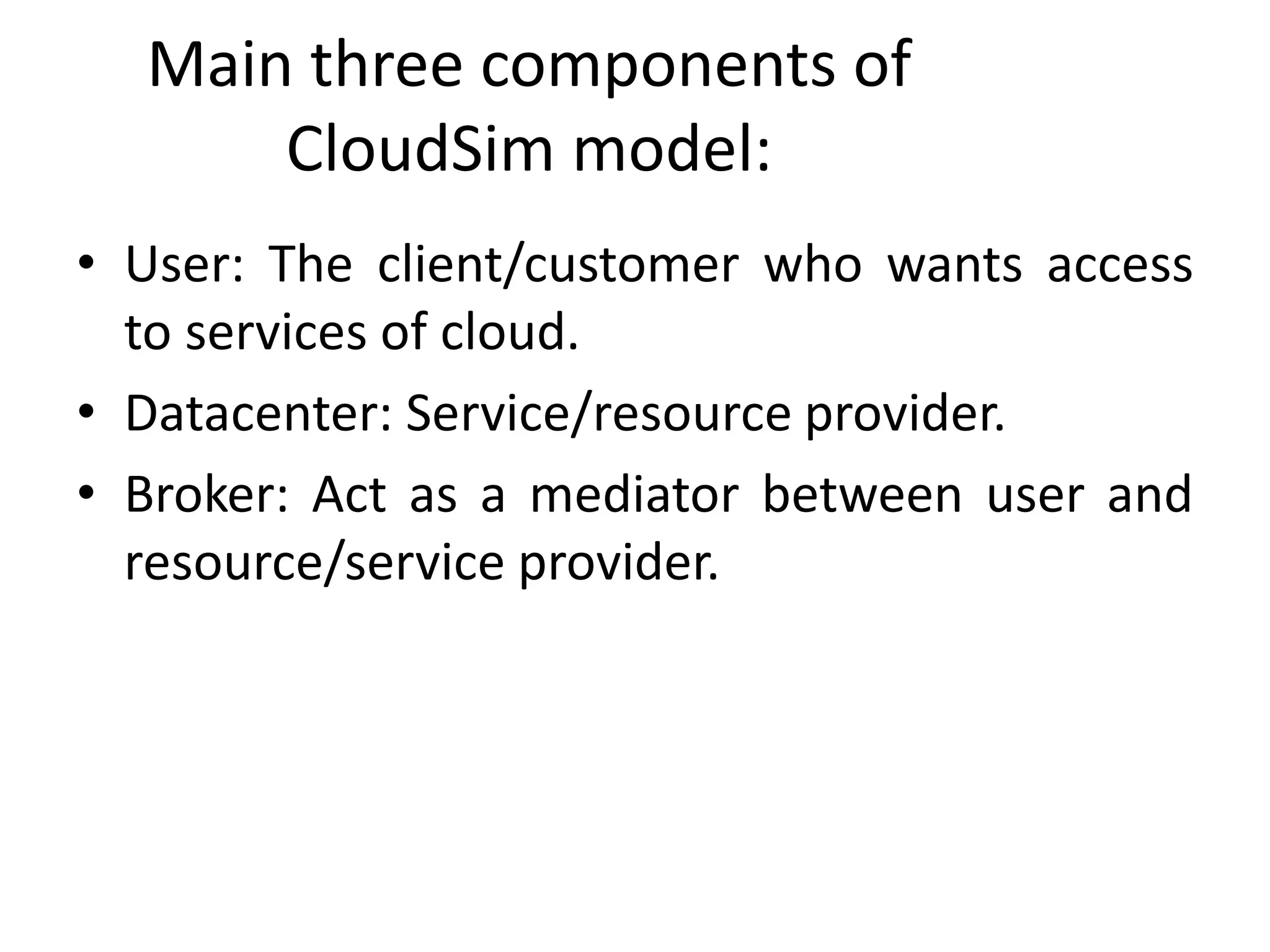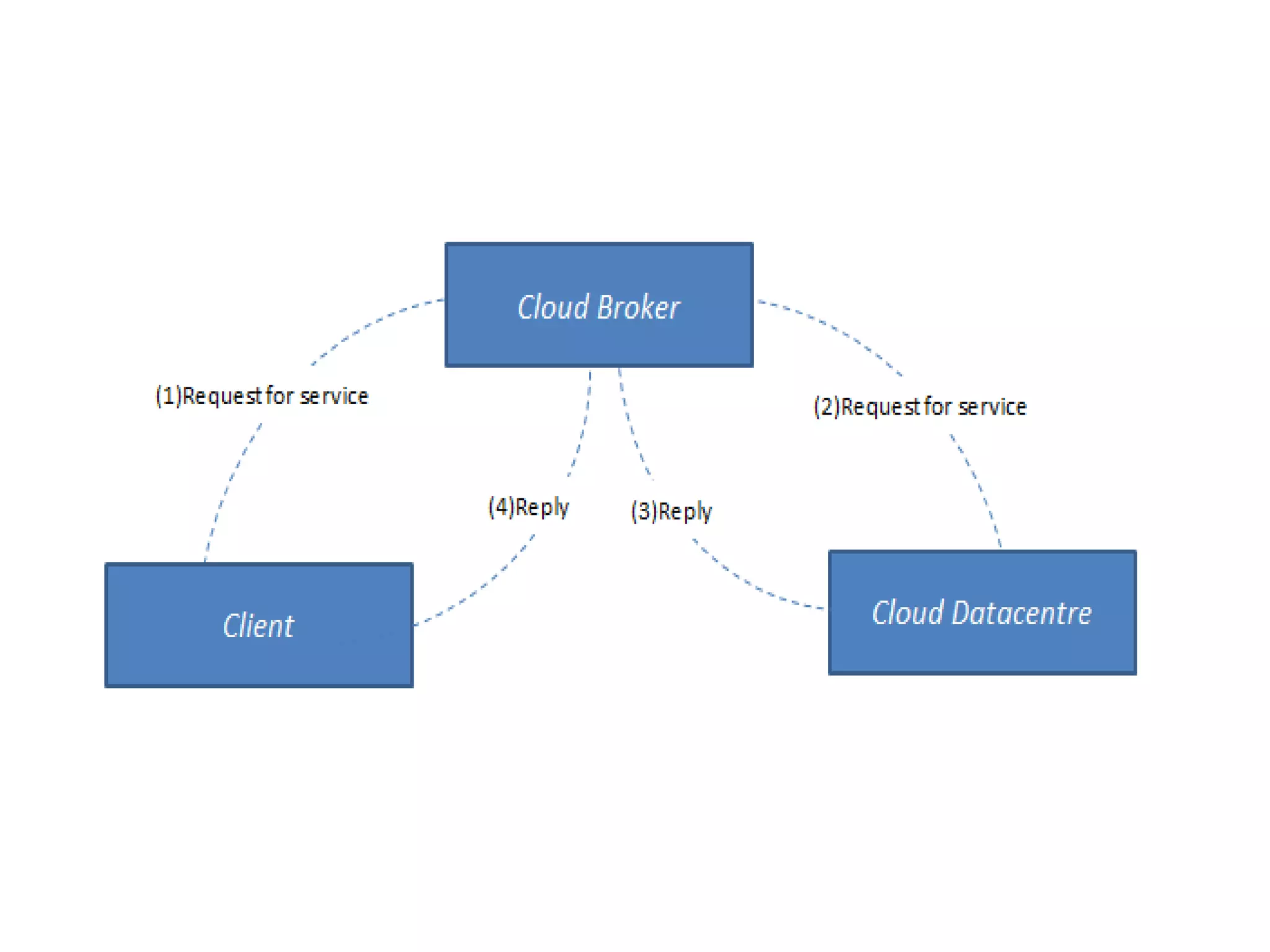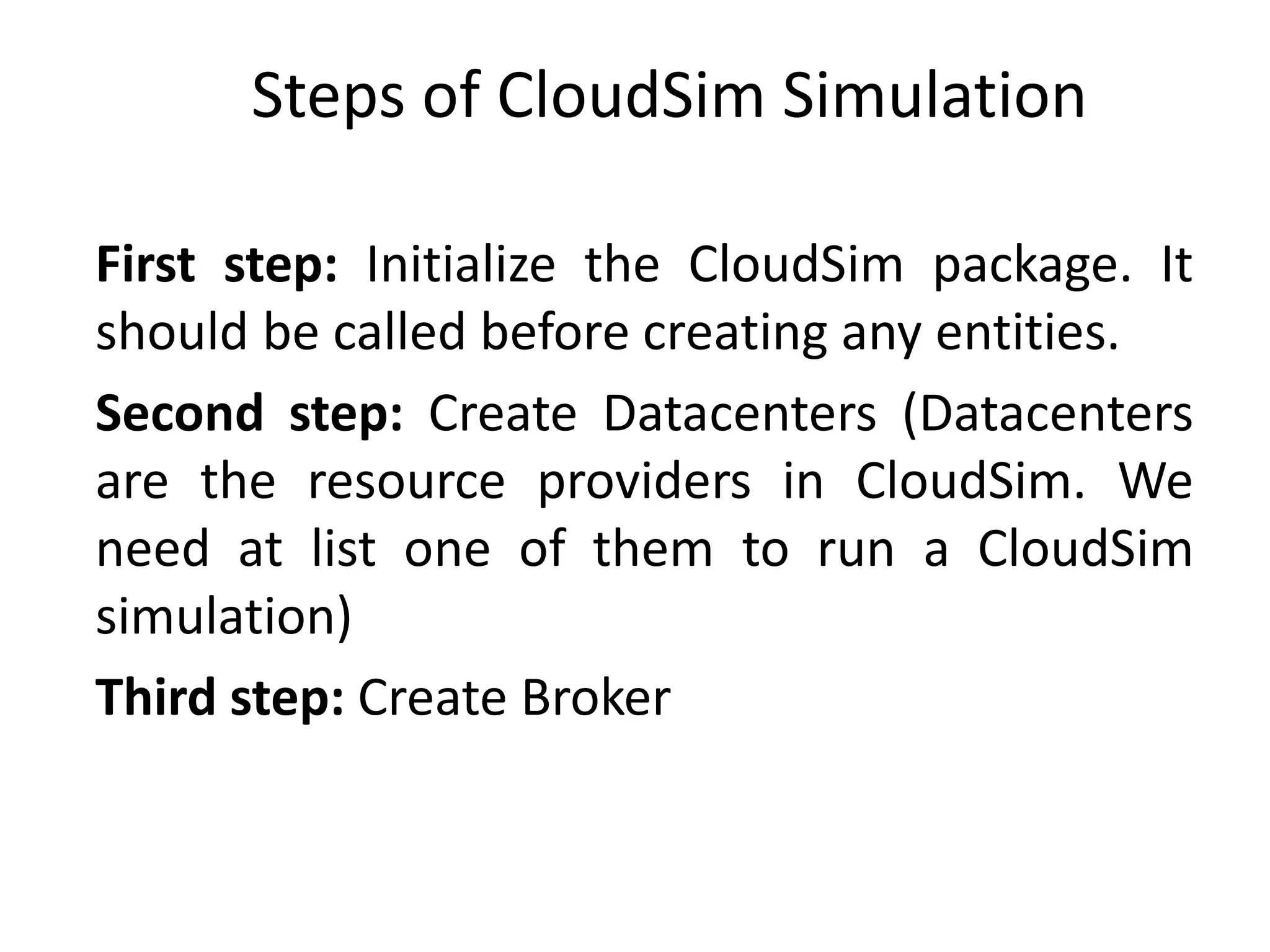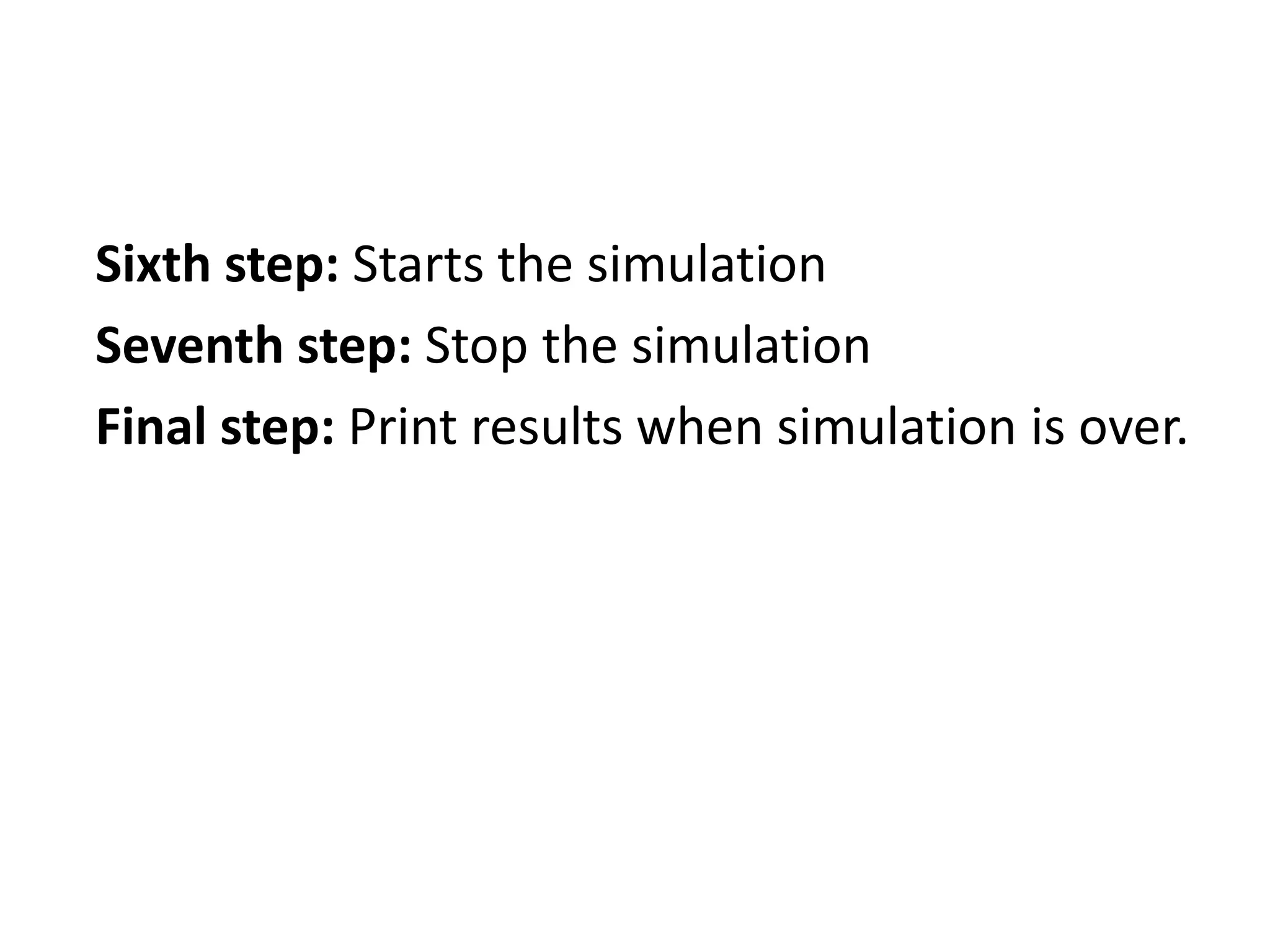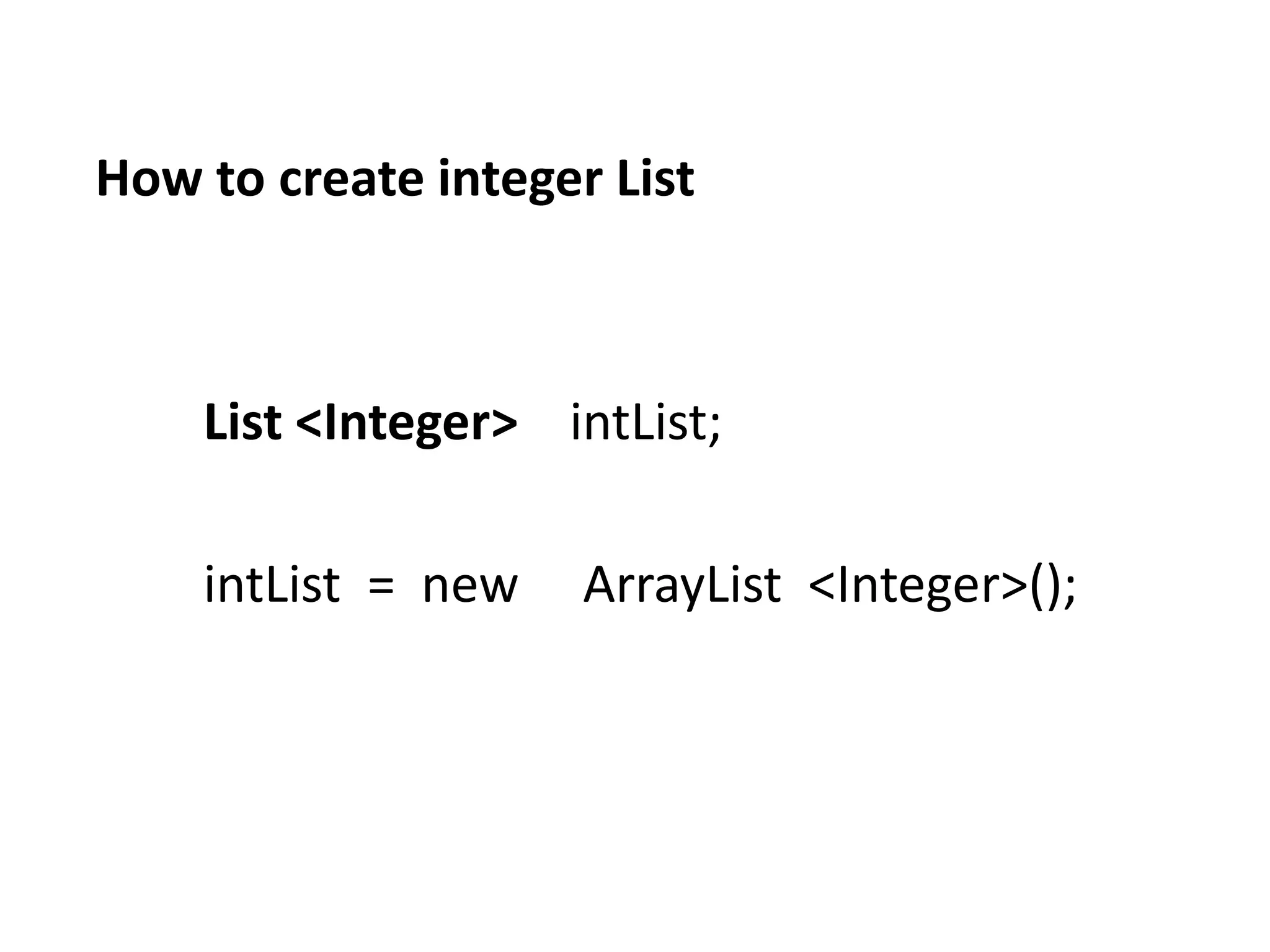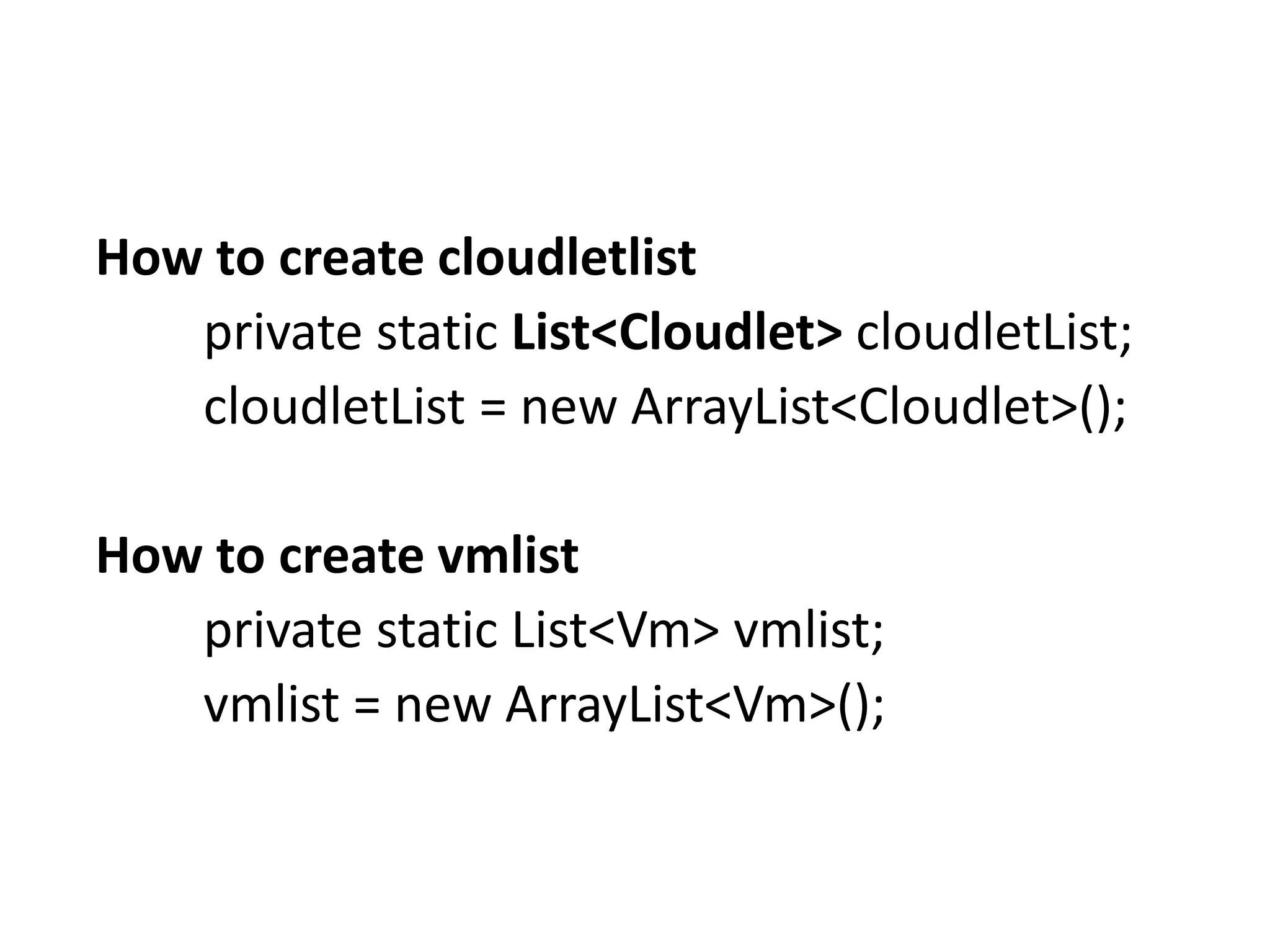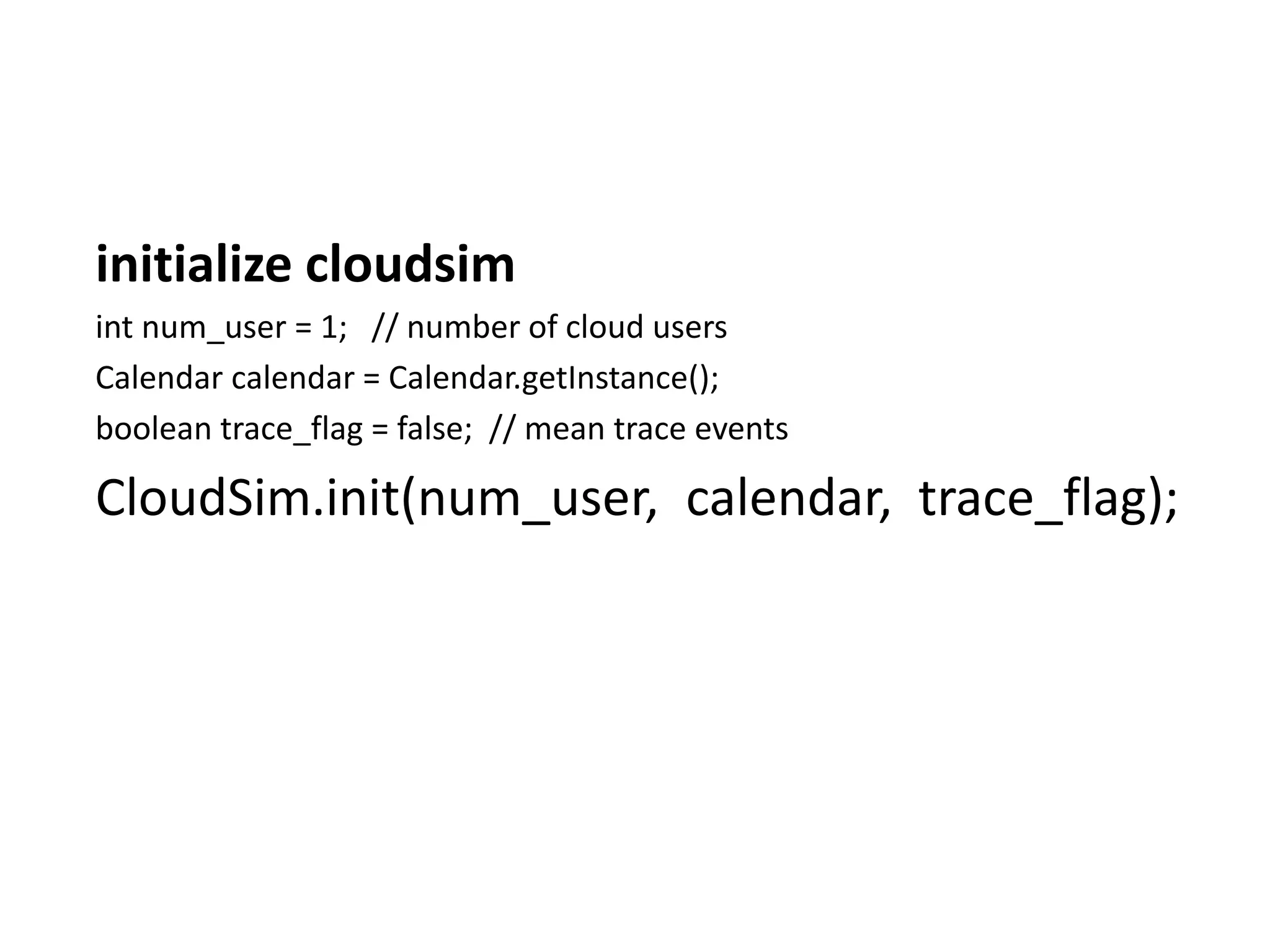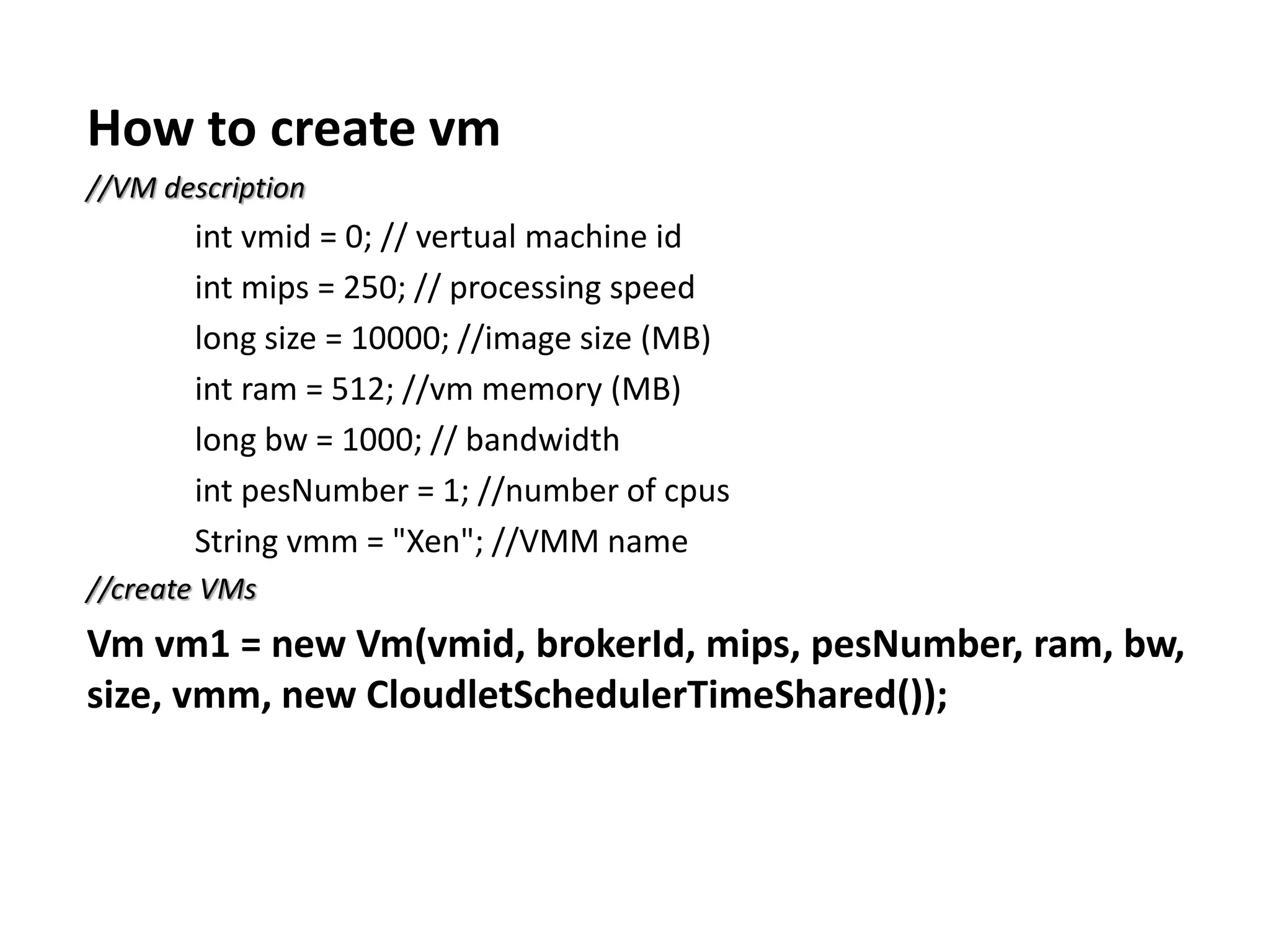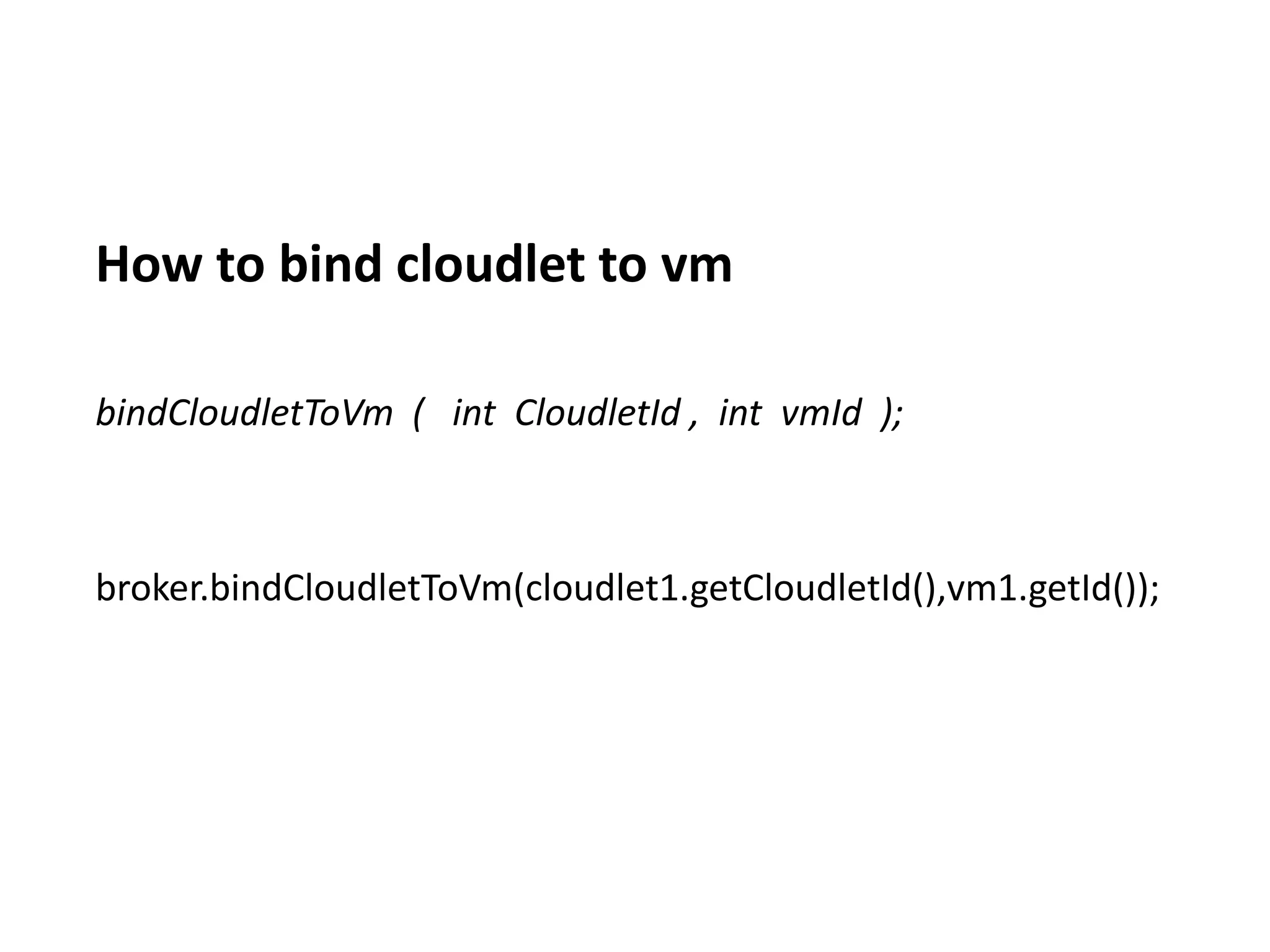CloudSim is a toolkit for modeling and simulating cloud computing systems and application provisioning environments. It allows modeling of data centers, virtual machines, and resource provisioning policies. The main components in CloudSim are users, datacenters, and brokers. Users generate workload and brokers act as intermediaries between users and datacenters. To run a simulation, users first initialize CloudSim, create datacenters and VMs, create cloudlets and bind them to VMs, create a broker, and start the simulation. Key steps include initializing CloudSim, creating VMs and adding them to a list, creating cloudlets and adding them to a list, binding cloudlets to VMs, and starting the simulation.
